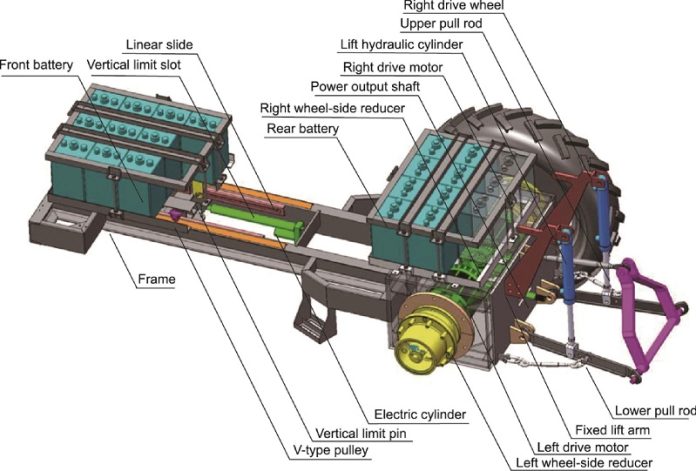
Traditional tractors, commonly seen on farms around the world, are known for their robust performance but also for their environmental drawbacks such as high greenhouse gas emissions and noise.
Addressing these concerns, researchers have developed an innovative electric tractor that promises not only to reduce emissions but also to enhance operational efficiency in various farming environments.
Electric tractors differ significantly from their traditional fuel-powered counterparts.
They produce no exhaust emissions and offer rapid response times and flexible power output, making them ideal for indoor farming, greenhouse planting, and working in mountainous areas.
However, designing these tractors to navigate complex environments poses a challenge, particularly in improving their traction capacity and overall operating efficiency.
Conventional tractors often struggle with efficiency issues when working on complex field surfaces.
Problems such as high wheel slip, poor load distribution between the front and rear axles, and subpar tillage quality due to inadequate suspension systems are common.
These issues not only hamper the tractor’s performance but also contribute to unnecessary energy consumption and increased emissions.
To combat these inefficiencies, the newly designed electric tractor incorporates an advanced wheel-side motor drive system, a battery ballast system, and an electro-hydraulic suspension system.
This design allows for precise control over the tractor’s traction and maneuverability, particularly under challenging soil conditions.
A key feature of this electric tractor is its ability to actively control the torque distribution to each drive wheel, which significantly reduces wheel slip—a common problem that leads to energy loss and soil damage.
Additionally, the tractor’s sophisticated suspension system adjusts the load between the front and rear axles based on real-time conditions, optimizing the tractor’s balance and traction.
The results from field tests are promising. The new torque distribution method has shown a reduction in wheel slip by nearly 15% and an increase in traction efficiency by over 10% compared to traditional methods.
Moreover, the joint control of traction force and axle loads has further improved traction efficiency by 3.7%, reduced slip by over 15%, and cut total energy consumption by nearly 5%.
Published in the journal Engineering, the study titled “Reducing Operation Emissions and Improving Work Efficiency Using a Pure Electric Wheel Drive Tractor” highlights the tractor’s innovative features.
These include a nine-degrees-of-freedom dynamics model that helps understand and predict tractor behavior under various conditions, ensuring optimal performance.
This development is a significant step towards sustainable farming, offering a powerful tool that not only meets the agricultural demands of modern farming but also aligns with environmental conservation efforts.
As this technology advances, it holds the promise of transforming agricultural practices by reducing the carbon footprint of farming and increasing the efficiency of food production.



